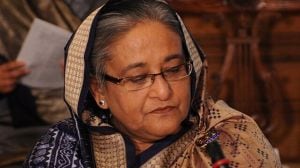Learn by numbers
The TV ratings system decides what programming we get. About time it was fixed.
After much carping from the sidelines,the information and broadcasting ministry has set up a panel to investigate and reform the entire business of television ratings. In a crowded market,attention-hungry news channels go to absurd lengths,degrading journalistic standards. In 2008,a news channel aired a sting operation that supposedly laid bare a porn racket run by a schoolteacher. The story was later revealed as fake,pure theatre designed to stoke TRPs. The government took a grim view of the matter. In fact,former I&B minister Priya Ranjan Dasmunsi had even called it a game between the stock exchange and a company,with five or six big corporate channels gaming the system to their convenience and to the detriment of the viewing public. The data is riddled with inaccuracies. It fails to address much of the rural population or factor in advert-low viewerships from regions like Jammu and Kashmir and the Northeast.
Television ratings systems have undergone several experiments,all unsatisfactory. In India,the business was long monopolised by a Nielson co-owned agency called Television Audience Measurement (TAM),which placed a few thousand people meters in sample homes across the country to assess viewing patterns. Although India because of sheer diversity needs more people meters than anywhere else in the world,the methodology has been picked apart by critics. Television networks criticised TAM when the scores made them look bad,and defended it when it swung in their favour. After irresponsible news reporting drew government scrutiny and much Parliament attention,the industry dropped TAM and formed the Broadcasting Audience Research Council to regulate their own workings,but that didnt make matters any better.
Would a different mechanism to generate ratings (one to be created by legislation) work better? Or perhaps,an accreditation body that would leave TRP generation to the industry representatives but screen their functioning better? Its a high-stakes game that will decide whether we get the TV we deserve.



- 01
- 02
- 03
- 04
- 05




























